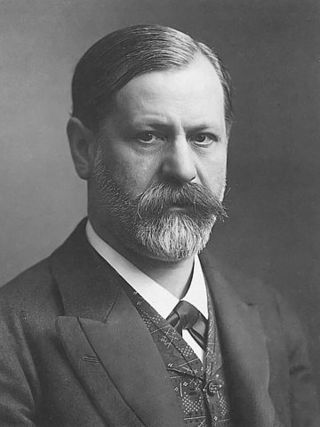Freudian Psychology
Freud's Wolf Man in the Era of Modern Psychiatry
The case of Freud's most famous patient reveals an unfortunate and grave error.
Posted July 22, 2019
The case of Freud's most famous patient, the Wolf Man, holds great distinction in psychiatric history for a few reasons. First, the Wolf Man is the only of Freud's analysands to publish his own memoirs in great detail. Secondly, much of Freud's thinking about psychoanalysis in general is derived from his work with the Wolf Man. Indeed, the Wolf Man was a keystone case in the development of psychoanalytic theory and treatment, as Freud himself emphasized.

Since the case of the Wolf Man plays such a central role in the history of psychoanalysis (and is assigned reading to many of those pursuing training in psychoanalysis and psychoanalytic psychotherapy), it makes sense to analyze Freud's conceptualization and treatment of the Wolf Man through the lens of modern scientific psychiatry. I believe that in examining the case from this perspective, we can identify a grave error made by Freud and the analysts who followed him in the twentieth century, namely, the near-exclusive focus on "neurotic" depressive symptoms and the disregard for an underlying biochemical mood disorder.
The Wolf Man, whose actual name was Sergei Pankejeff, was an aristocratic Russian émigré who received his nickname because he had an intense phobia about wolves. In early life, he was recorded as witnessing his parents having sexual intercourse and thereafter developed castration anxieties. He was later seduced by a servant and developed obsessive symptoms towards sexual problems. His symptomatology included a wolf phobia, religious obsessions, psychosomatic diarrhea, and paranoid delusions.
After a roughly four-year analysis, Freud pronounced the Wolf Man "cured" and wrote his first paper on the case in 1914 (which was not published until 1918). For Freud and his disciples, it was important to believe that the Wolf Man was a cured case, especially since so much of psychoanalytic theory and technique is based on Freud's observations about the case. History, however, tells a much more complex story about the success of Freud's treatment.
A few years after ending treatment with Freud, the Wolf Man suffered a psychotic episode during which he was observed in a street staring at his reflection in a mirror, convinced that a doctor had drilled a hole in his nose. His obsessions about his nose persisted, and his mood fluctuated between highs and lows. After 1945, he experienced periodic depressions every few years, alternating with periods of elation and hyperactivity. Thus, it is clear that the Wolf Man was not cured by his analysis with Freud. If anything, he may have been worsened by it.
An analysis of the Wolf Man's family tree is revealing: His father committed suicide, and he had been diagnosed as manic-depressive and hospitalized for depression several times. In fact, it was Freud's archrival, the pioneering psychiatrist Emil Kraepelin, who diagnosed the father as a case of manic-depressive psychosis. The Wolf Man's sister committed suicide in her early twenties. The maternal grandfather alternated between being shy, withdrawn, and miserly and being a lively, gregarious, and generous man whose optimism and confidence knew no bounds. His paternal grandmother attempted suicide in a postpartum depression, and his paternal grandfather was an alcoholic. This type of genetic patterning is typical for a biological mood disorder.
There is no question that today the Wolf Man would be diagnosed as having a bipolar affective disorder with psychotic features. It is doubtful that Freud was aware of this, as he focused exclusively on the psychodynamic origins of the Wolf Man's depressions. Kraepelin, in contrast, would have likely diagnosed the Wolf Man accurately as manic-depressive, as he diagnosed the father.
Certainly, the Wolf Man gained many insights into his unconscious motivations and may have lived a more complete life as a result of his Freudian analysis. Freud may have finished treating him in a spontaneous hypomanic upswing and thought he had brought about improvement and "cure." Nevertheless, I would consider Freud's exclusive focus on neurotic symptoms and personality to reflect a serious error, and one that was repeated countless times by psychoanalysts into the mid-twentieth century. Unfortunately, this error is still made by some devout practitioners today, that is, the disregard for a biochemical psychiatric disorder in favor of undertaking some other approach, e.g., psychotherapy, psychoanalysis, hypnosis, acupuncture, "trauma therapy," EMDR, etc.
Today, the Wolf Man would have likely been started on lithium carbonate or other mood-stabilizing medication and treated prophylactically between mood episodes. He may have been referred for supportive therapy or counseling, or, if he was interested in a more thorough investigation of his personality beyond his biological mood symptoms, to psychoanalytic therapy. In general, psychoanalytic treatment is appropriate in these cases only after the patient's condition has been stabilized with pharmacological therapy. Given the high success rate of lithium, it is probable that the Wolf Man would have gone into complete remission.
An analysis of the case of the Wolf Man through the lens of modern psychiatry demonstrates the great advances that have been made in the understanding and treatment of mental disorder in the past one hundred years. It also reminds us of the dangers, in contemporary practice, of overlooking biological mood disorder in favor of other, alternative approaches.




